

ATEC is in possession of technologies to produce all types of Paraformaldehyde products in varying concentration ranges and polymerization degree spans. It can offer PLANTS for:
Multi stage evaporation and chilled conveying process.
Multi stage evaporation and rotary vacuum drying.
Multi stage evaporation and spray cum fluidized bed drying.


Plants for production of flakes are relatively inexpensive, whereas the processes for production of prills / granules are fairly elaborate and such plants involve a much larger investment.
Paraformaldehyde is a polymer of Formaldehyde in solid form, containing a percentage of water, readily soluble in order to obtain an aqueous solution or to be used as a reactant by dissolving it in the reaction medium.
Paraformaldehyde, which is represented by typical formula HO (CH2O)n H is also termed as mixture of Polyoxymethylene Glycols. It is a controlled polymerized product of Formaldehyde in solid form. The presence of Formaldehyde unit per molecule is more than 6.
| Grade | 89% | 91% | 93% | 96% | 97% |
|---|---|---|---|---|---|
| Formaldehyde Content (%) | 89 ± 1 | 91 ± 1 | 93 ± 1 | 95.5 ± 1 | 96.5 ± 1 |
| Methanol Content (% Max.) | 1 | 0.5 | 0.5 | 0.5 | 0.5 |
| pH (10% Aqueous Suspension) | 3–5 | 3.5–6.5 | 3.5–6.5 | 5–7 | 5–7 |
| Acidity as Formic Acid (% Max.) | 0.03 | 0.03 | 0.03 | 0.03 | 0.03 |
| Reactivity (Resorcinol Test) (min) | 2–3 | 2–4 | 2–4 | 2–4 | 3–5 |
| Flash Point (Open Cup) (°C) | 93 | ||||
| Flash Point (Closed Cup) (°C) | 71 | ||||
| Iron Content (PPM Max.) | 2 | ||||
| Ash Content (PPM Max.) | 100 | ||||
| Melting Point (°C) | 120–170 | ||||
| Bulk Density (kg/m³) | 750–750 | 750–850 | 750–850 | 750–850 | 500–800 |
| Grain Size (Min. 80%) (mm) | 0.2–1.0 | Min. 90% < 0.100 DIN 60 | |||
Production of Paraformaldehyde usually starts from 37% or 55% by weight aqueous solutions of Formaldehyde. It is concentrated at temperatures below 100°C, often done by vacuum distillation and mainly water distills off at first. The concentration of Formaldehyde present chiefly as hydrate is increased. The solutions can be concentrated in this way up to Formaldehyde content of above 80% at which point the greater part of the Formaldehyde is already present in the form of oligo–oxymethylene glycols. On cooling, gels with colloidal properties are obtained which are at first waxy but later on become brittle which consist of Paraformaldehyde.
Paraformaldehyde in flake form is produced by this process. The raw material for the said Paraformaldehyde production is freshly manufactured high concentration (52–55%) Formaldehyde solution. A basic flow diagram is given below:
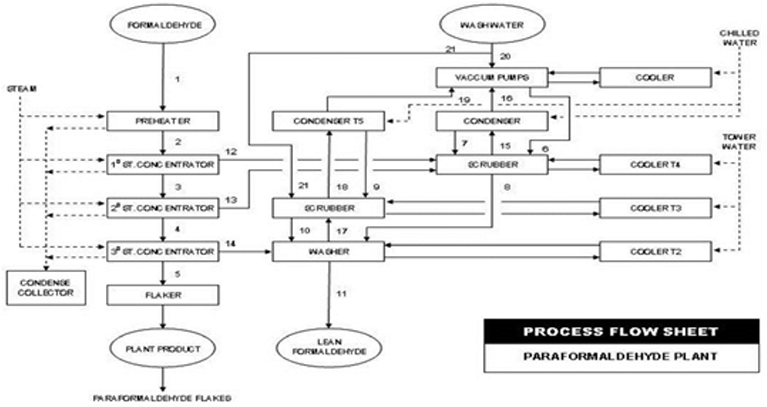
Salient features of ATEC's modified process for manufacture of flaked Paraformaldehyde are enumerated below:
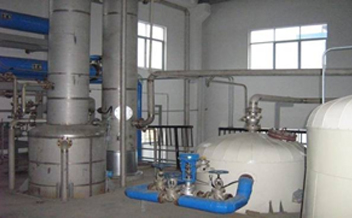

A unique process based on Vacuum Concentrated and Drying of Product to produce various (91% to 96%) concentration grades of Paraformaldehyde would be applied. In the ATEC process Paraformaldehyde is manufactured from aqueous (37%) Formaldehyde solutions by the process involving distillation and concentration at a point at which solidification or precipitation of polymer takes place. The process of concentration is carried out by vacuum evaporation. The main sections of the PLANT are:
This Process is offered by ATEC in association with Libra Techcon.

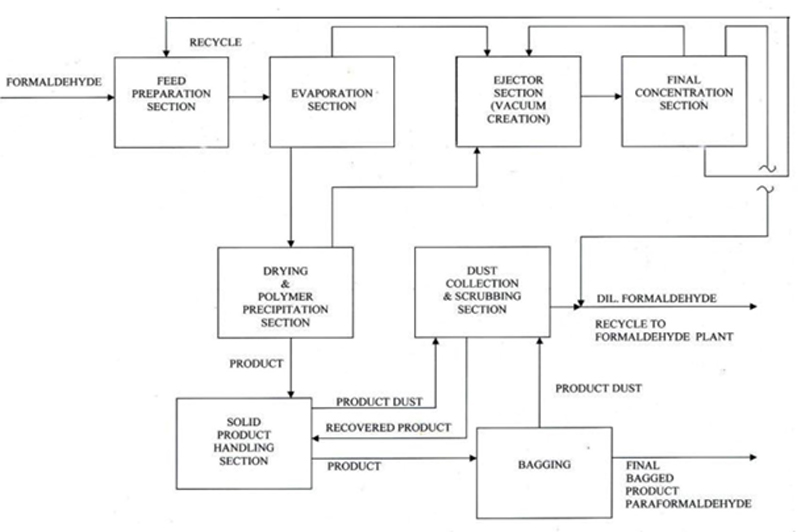
The Process has been over the years upgraded based on actual operational experience obtained in PLANTS of different optimal production level from 5 M.P.D through 15 M.T.P.D. upto 30 M.T.P.D. and beyond. The upgradation carried out was in terms of optimization of equipment / machinery sizing and more compact lay out at individual floor level of the PLANTS.
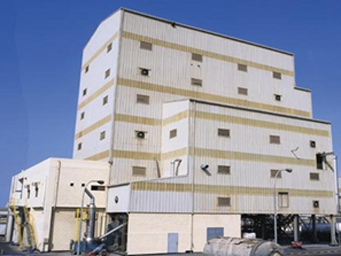
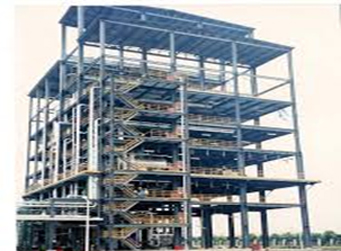
(Based on Spray Cum Fluidized Bed Drying)
The process essentially consists of the following steps:
Concentration of Aqueous Formaldehyde (AF-37) to AF (75–85) is carried out in a falling film evaporation and thin film evaporation (side stream) system.
The concentrated 75–85% Aqueous Formaldehyde is fed to a conical bottom NIRO vacuum spray dryer.
Spray dried powder is further processed in a Fluidized Bed Dryer before being sent to the product handling system. A liquid catalyst is used in the process.
Three different grades (89%, 92%, and 96%) of Paraformaldehyde are produced for use in resins, agrochemicals (herbicides/pesticides), and disinfectant/medical intermediate sectors.
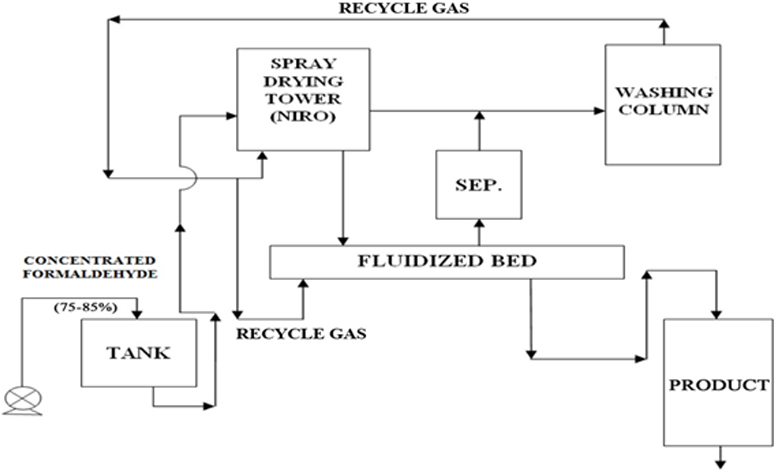
An alternative process for production of prilled Paraformaldehyde products using the “Prilling Tower Concept” is also available. A schematic block diagram of this Process is shown below:
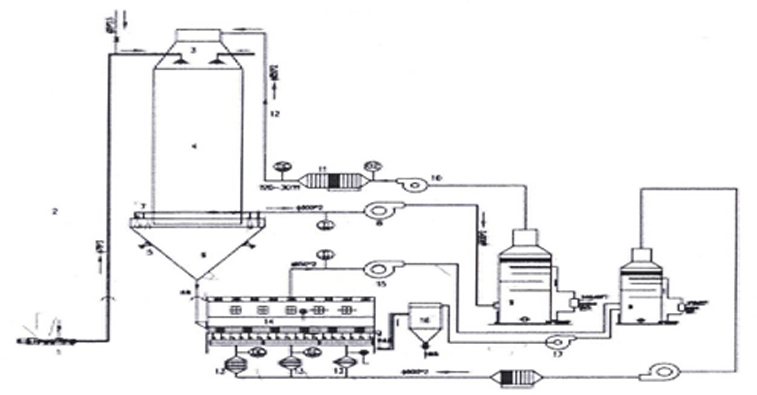
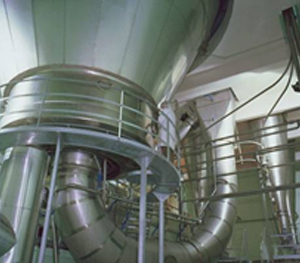
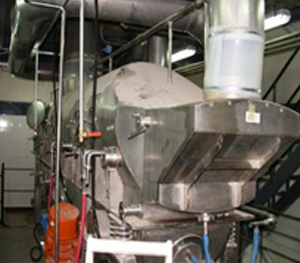
Combined Spray and Fluidized Bed Drying for Paraform
The granular Paraformaldehyde manufacturing processes offered by ATEC will produce Paraformaldehyde of the following specifications:
| Aldehyde content (as HCHO % by mass) | : (91–96 ± 1) for individual grades |
| Ash Content, ppm (max.) | : 100 |
| Free Moisture content Percent by mass (max.) | : 1 |
| Acidity (as HCOOH) Percent by mass (max.) | : 0.03 |
| Iron (ppm by mass max) | : 2 |
| pH | : 4 – 7 |
| Methanol ( % by mass max.) | : 1 |
| Melting Point | : 120° - 170°C |